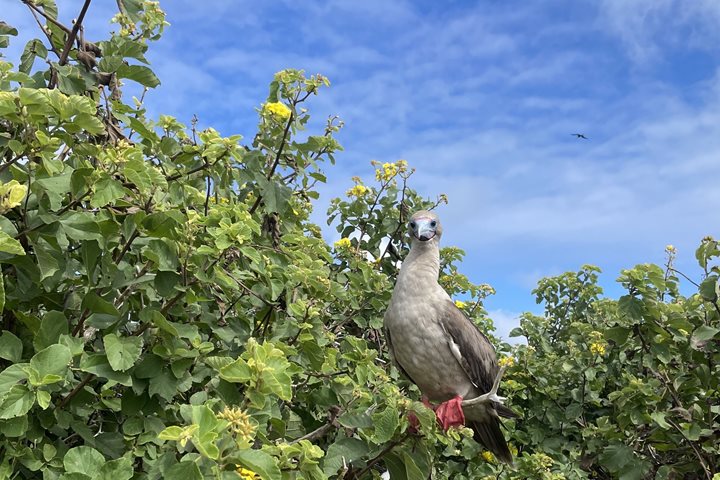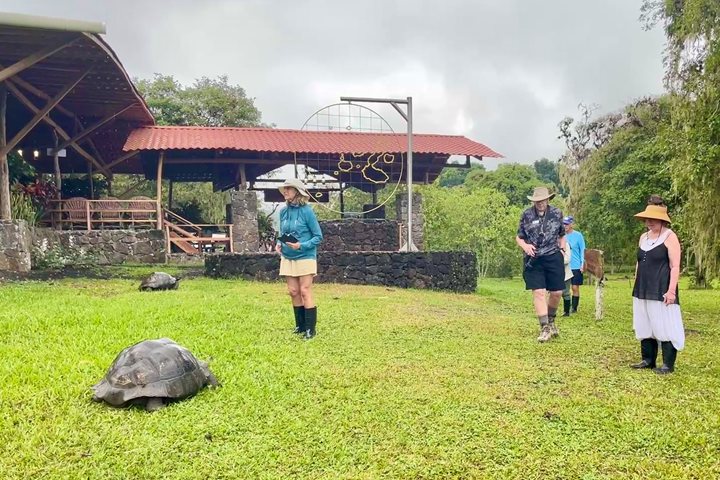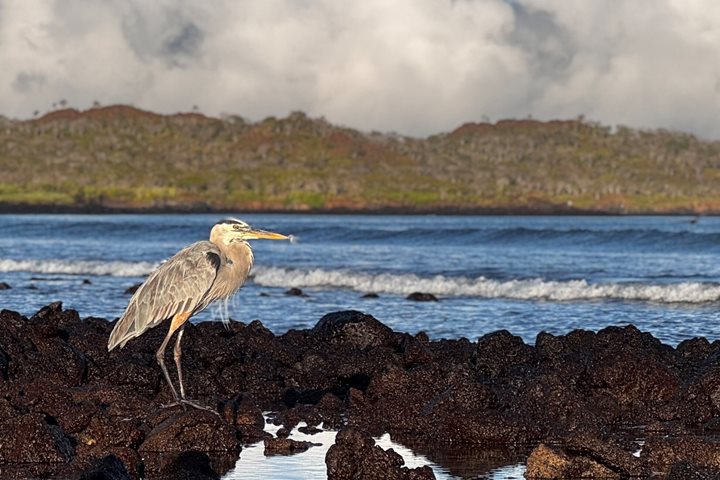This morning we had an early walk to the summit of Bartolome Island. This landscape gives you the feeling that you are walking on a different planet; the barren terrain looks like the moon, or perhaps Mars. Very few plants can survive in this harsh environment, like the endemic tiquilia or the lava cactus. After breakfast, our guests enjoyed some time at the golden beach of Bartolome and later on, they went deep water snorkeling. The water was clear, and they saw many colorful fish, sea stars, rays and white-tipped reef sharks. In the afternoon the National Geographic Endeavour II navigated towards Sombrero Chino Islet. Our Captain Pablo Garces maneuvered to bring us close to the Bainbridge Islet and we got to see the brackish water lagoon and a good number of greater flamingos. The snorkeling at Sombrero Chino was awesome, it is like an aquarium full of fish, sharks, and Galapagos penguins that swim right up to us, it was spectacular. The Zodiac ride was a great opportunity to take great photos of the endemic Galapagos penguins.
5/29/2025
Read
National Geographic Gemini
Genovesa Island
Genovesa is considered one of the Galapagos crown jewels, and today it was showing off all of its splendor. Immediately after breakfast we put on our sturdy shoes and set out to explore Prince Philip’s Steps. This area is known for opportunities to observe not only large colonies of nesting Nazca and red-footed boobies, but maybe, just maybe, the short-eared owl which exhibits diurnal behavior on this island. After this walk we got ready for a dip in the Pacific Ocean and snorkeling along the inner coast of this caldera. The afternoon was equally amazing as we disembarked to explore Darwin Bay, along a short and easy trail that was packed with wildlife. Here we observed not only nesting frigatebirds, red-footed boobies, and Nazca boobies, but also a few yellow-crowned night herons. It was another incredible afternoon in the Galapagos Islands.







